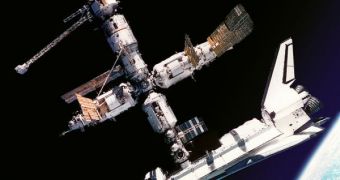Despite the global economic downturn, China is currently pushing more and more for a space station, a project meant to put the country among the world's top space powers, right next to the United States and Russia. The Asian nation is only the third in the world to manage to send astronauts in orbit using its own rockets and crew modules. Continuing on its own footsteps, Beijing officials told the Xinhua official news agency on Saturday that two Chinese spacecraft would dock in space by as early as 2011, in a move meant to provide space experts with the experience necessary to build the country's first space station.
Plans are to launch an unmanned spacecraft in late 2010, and then another one in early 2011. After a brief period, the two automated crafts will dock to each other, setting the foundation of China's station. Authorities announced that, despite the fact that the two machines would be remotely-controlled, one of them, the 8.5-tonne Tiangong I module, would allow “Chinese astronauts to live and conduct scientific research in zero gravity,” meaning that they are actually planning on launching a module similar to those currently docked to the ISS.
Also, the new type of module, a prototype of which authorities announced to be almost complete, would also be “able to perform long-term unattended operation, which will be an essential step towards building a space station,” Xinhua reported, citing a Chinese expert who only shared the information on conditions of anonymity.
The Shenzhou VIII spacecraft will be the foundation of the future Chinese space station, and other various modules will be attached in the future in order to augment it. In the grand scheme of things, the space station itself, although a good 5 to 10 years away at least, is only a trial for the real purpose of space experts in the country, and namely designing, building and launching a space vehicle capable of reaching and exploring the Moon.
For this task, the government is already opening public bids, in hopes that universities and private research institutions would take it upon themselves to design at least parts of the future lunar lander. The Chang'e-1 satellite, China's first Moon orbiter, concluded its mission only recently, after making thousands of spins around Earth's natural satellite. Beijing now believes it has enough data to plan for a Moon landing – the only thing it's missing is the way to get there.

 14 DAY TRIAL //
14 DAY TRIAL //